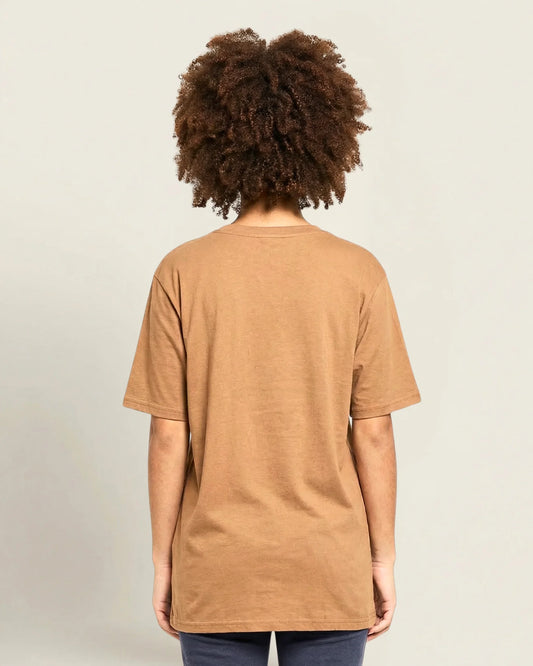Hoodies are more than just a piece of clothing; they have evolved into a significant cultural and psychological symbol. From their historical origins to their role in modern fashion, hoodies have a multifaceted impact on how individuals are perceived and how they express themselves. This article delves into the various dimensions of wearing a hoodie, exploring its psychological implications, cultural significance, and the controversies that surround it.
Key Takeaways
- Wearing a hoodie can evoke feelings of comfort and security, offering a sense of privacy and emotional comfort.
- Hoodies have a rich cultural history, originally stemming from monks' robes and evolving into a staple of youth culture and streetwear.
- The design and style of a hoodie can serve as a form of self-expression, allowing individuals to showcase their unique personality and affiliations.
- Despite their popularity, hoodies are often subject to controversy, including issues of racial profiling and negative media representation.
- Hoodies are highly versatile, suitable for casual wear, high fashion adaptations, and functional uses across different seasons.
Psychological Implications of Wearing a Hoodie
Perceptions of Anonymity and Ambiguity
Wearing a hoodie can create a sense of anonymity and ambiguity. The hood, when raised, can obscure one's face, making it easier to blend into the background. This can be particularly appealing for those who wish to avoid attention or feel vulnerable in social settings. The ability to remain unseen can provide a sense of control and security.
Comfort and Security
A hoodie offers more than just warmth; it provides a feeling of comfort and security. The soft fabric and the enclosed space can make the wearer feel cocooned and safe. This is especially true for individuals who are fighting insecurities and vulnerabilities. The physical sensation of being wrapped up can be incredibly soothing.
Impact on Social Interactions
The choice to wear a hoodie can significantly impact social interactions. In some contexts, it may signal a desire for solitude or a need to create personal space. Conversely, in other settings, it might be seen as a fashion statement or a sign of belonging to a particular group. The social norms and peer pressure surrounding hoodies can influence how they are perceived and how the wearer is treated.
Cultural Significance of Hoodies

Historical Origins and Evolution
The hoodie has a rich history, evolving from its origins in monks' robes to becoming a staple in modern wardrobes. Initially, outdoor workers and athletes primarily wore hoodies, associating them with sports and manual labor. Over time, the hoodie has transformed, reflecting various cultural shifts and societal changes.
Association with Youth Culture
The hoodie has become a powerful symbol of youth culture, often linked to rebellion and nonconformity. It is embraced by skaters, surfers, and hip-hop musicians, representing a sense of freedom and individuality. Despite its positive associations, the hoodie has also faced negative connotations, particularly in relation to deviant behavior and unemployment.
Role in Streetwear and Fashion
In recent years, the hoodie has transcended its humble beginnings to become a key element in streetwear and high fashion. Designers have reimagined the hoodie, incorporating it into their collections and elevating its status. Today, the hoodie is a versatile piece, worn by people from all walks of life, reflecting both comfort and style.
Hoodies as a Form of Self-Expression
The importance of individual choice and expression cannot be overstated when it comes to wearing a hoodie. Hoodies have become a symbol of individuality and personal expression, allowing people to showcase their unique style and personality. Whether it's a plain black hoodie or one with a bold graphic design, wearing a hoodie allows individuals to express themselves in a way that feels comfortable and authentic. This sense of individuality is especially important in a world where conformity is often expected.
Individuality and Personal Style
Hoodies offer a unique canvas for personal style. From minimalist designs to vibrant patterns, the variety available means that everyone can find something that resonates with their personal taste. Clothing carries undeniable meaning, and that is why it can become a strong vehicle for self-expression.
Subcultural Affiliations
The association of hoodies with different subcultures is well-documented. Whether it's skaters, hip-hop enthusiasts, or tech-savvy individuals, each group has adopted the hoodie as a part of their identity. This garment serves as a unifying symbol, bringing together people with shared interests and values.
Messages Conveyed Through Design
The design of a hoodie can convey powerful messages. Slogans, logos, and artwork can all be used to make a statement, whether it's political, social, or purely aesthetic. In this way, hoodies become more than just clothing; they become a medium for communication and expression.
Controversies Surrounding Hoodies

The hoodie has long been a subject of debate, often surrounded by negative stereotypes and prejudices. While many people wear hoodies for comfort and style, they are sometimes viewed with suspicion and linked to criminal activities.
Racial Profiling and Stereotypes
Hoodies have unfortunately become a symbol of racial profiling, particularly against black and brown individuals. The association of hoodies with criminal behavior has led to unfair treatment and discrimination. This issue is exacerbated by media representation, which often portrays hoodie wearers in a negative light.
Media Representation
The media plays a significant role in shaping public perception of hoodies. News stories and movies frequently depict individuals in hoodies as suspicious or dangerous, reinforcing harmful stereotypes. This portrayal contributes to the stigma surrounding hoodie wearers and influences public opinion.
Legal and Social Implications
In some regions, wearing a hoodie in public places is restricted due to concerns about anonymity and safety. For example, some schools have policies prohibiting students from wearing hoods in class, hallways, or on school grounds due to concerns about student safety. These regulations can lead to further marginalization of individuals who choose to wear hoodies, impacting their social interactions and sense of identity.
The Versatility of Hoodies in Modern Wardrobes
Casual and Comfortable Wear
Hoodies have become a staple in many wardrobes due to their unparalleled comfort and versatility. They can be effortlessly paired with jeans for a laid-back look or with joggers for a more athletic vibe. The most common materials include cotton, polyester, and blends of both, offering breathability and softness, making them ideal for everyday wear.
High Fashion Adaptations
In recent years, hoodies have transcended their casual roots to become a significant element in high fashion. Designers have embraced the hoodie, incorporating luxurious fabrics and innovative designs. This shift has allowed hoodies to be worn in more formal settings, breaking traditional fashion norms.
Seasonal and Functional Uses
Hoodies are not just for winter; they are suitable for all seasons. Lightweight hoodies are perfect for cool summer evenings, while thicker, fleece-lined options provide warmth during the colder months. Their functional design, often featuring pockets and adjustable hoods, adds to their practicality, making them a go-to garment for various activities.
Psychological Comfort and Security
Wearing a hoodie can provide a sense of privacy by creating a physical barrier between the wearer and the outside world. This can be particularly appealing for introverted individuals who prefer to keep to themselves in public spaces. The hood can act as a shield, offering a feeling of seclusion and personal space.
Hoodies are often associated with emotional comfort. The soft fabric and relaxed fit can evoke feelings of warmth and coziness, making them a go-to choice for those seeking solace. This emotional comfort can be a powerful source of support, especially during stressful times.
For many introverted individuals, wearing a hoodie can be a way to navigate social situations with ease. The garment can serve as a form of armor, helping them feel more secure and less exposed. This can lead to a more positive experience in social interactions, as the hoodie provides a comforting layer of protection.
Conclusion
In conclusion, the hoodie is a multifaceted garment that carries a wide range of meanings and associations. From its origins in monks' robes to its current status as a staple in youth culture and high fashion, the hoodie has evolved to symbolize everything from comfort and individuality to rebellion and anonymity. While some may view the hoodie with suspicion, associating it with deviant behavior or criminality, others see it as a form of self-expression and a source of comfort. Ultimately, what a hoodie says about you depends on how you wear it and the context in which it is worn. Whether you wear it for its cozy feel, its style, or its statement, the hoodie remains a powerful symbol of personal identity and cultural significance.














